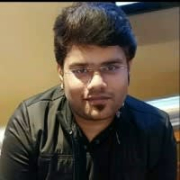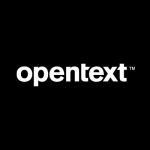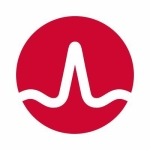I use One Identity Manager for all the IAM capabilities in my day-to-day use cases, such as Identity and Access Management.
When initially implemented, One Identity Manager comes with basic modules, but additional ones can be added to encompass data governance, complaints, audits, and more within a single platform. Many organizations limit its use to identity and access management processes, but its potential extends far beyond this, offering broader application and management opportunities. Ultimately, the system's effectiveness depends on how it is managed and implemented within an organization.
From a non-technical perspective, there isn't much customization we could do on the portal apart from seeing whatever our IT admins have given us access to. However, One Identity Manager can be customized heavily on the back end. Customizations are easy because they have a lot of documentation. They have provided extensive documentation. But at times, following the documentation can be a bit difficult. It can help you. For example, if we know the product, we can easily manage everything.
One Identity Manager maps out company structure through its business role feature, which offers dynamic role-sensing capabilities. Unlike other tools, it allows for assigning approvers and managers to business roles, effectively managing multiple access modules under a single umbrella. This functionality is useful for achieving least privileged and role-based access metrics, making it a valuable asset in various use cases.
We have some integration with cloud apps, and One Identity Manager recently introduced Starling Connect, offering several out-of-the-box features. However, current functionalities are limited, so significant customization might require exploring additional API endpoints. The available attributes and tools are sufficient for basic cloud management tasks.
The benefits of implementing One Identity Manager would be immediate as its out-of-the-box configurations can be enabled right away. However, realizing these benefits might take longer if the enterprise requires end-user customizations. In essence, the speed of reaping the advantages depends on whether we utilize the tool's standard features or need to tailor it to specific organizational needs.
One Identity Manager effectively reduces governance coverage gaps across production servers by offering a comprehensive suite of governance-related capabilities. Its built-in transporter tool facilitates seamless migration of changes between environments, eliminating the need for manual configuration or reliance on third-party solutions. Unlike other tools that may require custom integrations or external dependencies, One Identity Manager provides a complete, out-of-the-box solution for managing environment transitions.
One Identity Manager can help establish a privileged governance framework to bridge the security gap between privileged and standard users. The specific capabilities depend on the enabled modules. The privileged access governance module offers advanced features like risk indexing and out-of-the-box support for identifying high-risk identities based on configurable rules or violations. Even without this module, the platform provides customization options for managing privileged users and includes basic risk assessment functionalities.
One Identity Manager can assist in consolidating procurement and licensing, but the extent of its capabilities depends on the target system being managed. While it offers licensing management features for SAP systems, including the ability to fill in gaps, managing licensing for other products requires customizations utilizing Active Directory or Azure Active Directory groups. In these cases, the process differs from the integrated licensing management available for SAP within the One Identity Manager platform.
One Identity Manager simplifies application access decisions by consolidating all entitlements for any integrated system into a single product within the IT department. This unified platform enables efficient access requests, approvals, and multi-level approval workflows, with customization options to manage application entitlements according to specific needs. Additionally, the system's rules can merge multiple access entitlements into a single request, which can be submitted through the front-end portal.
One Identity Manager's ability to streamline application compliance varies depending on the integrated application. Out-of-the-box applications offer built-in compliance capabilities, but third-party tools or custom solutions may be required for those without pre-built connectors. However, compliance functionalities are available for all out-of-the-box target systems.
While One Identity Manager cannot perform a full application audit, it can assess access entitlements and identities within the application.
One Identity Manager empowers application owners and line-of-business managers to make application governance decisions independently from IT. With appropriate permissions, these managers can establish business roles, assign applications and items, and create corresponding system roles accessible to other organizational users. While this capability exists, most organizations avoid this approach due to the potential for invalidating business roles without proper verification.
Achieving a zero-trust model with One Identity Manager is feasible but heavily reliant on the policies configured within the system. We can effectively establish a zero-trust environment with carefully crafted policies and conditions. However, limiting the tool's use to provisioning, de-provisioning, and data manipulation processes restricts its potential. By fully exploring and leveraging One Identity Manager's capabilities, we can significantly enhance our ability to implement a robust zero-trust model.
From a technical perspective, One Identity Manager's greatest strength lies in its extensive customization options. The platform offers a wealth of functionalities and flexibility, allowing us to tailor solutions to meet our organization's specific needs without limitations. This unparalleled adaptability is One Identity Manager's most significant advantage.
The end-user interface is intuitive and easy to navigate, making finding information within the portal simple. However, extensive customization can complicate management. From a technical standpoint, the backend is more complex due to managing multiple client tools for various One Identity Manager modules. While these tools interact, their number can overwhelm new users, hindering their ability to effectively understand and utilize the system. The front end is user-friendly, but the back end presents significant challenges.
One Identity Manager is a complex tool with multiple components and a convoluted backend. Its various clients for managing different tasks can confuse IT and non-IT users. Simplifying the tool and streamlining processes would be beneficial. Additionally, while the out-of-the-box connectors are helpful, incomplete support for certain objects hinders efficiency. Providing full support for all objects would enhance the tool's usability.
I have been using One Identity Manager for almost four years.
We haven't encountered significant stability issues. If we follow the provided documentation, we should not experience multiple problems, and a clean environment is crucial for proper configuration. However, mismanagement of processes or queues can lead to crashes. Ultimately, system stability depends on environment management, deployment, and configuration within the system.
It is highly scalable, supporting both vertical and horizontal scaling. Deployment on orchestration platforms like Kubernetes simplifies management, especially with the right team and capabilities. Kubernetes environments offer significantly easier scaling compared to other solutions.
I have experience with Microsoft Identity Manager, Entra ID, and SailPoint Identity Security Cloud. While Microsoft Entra ID and SailPoint are relatively straightforward to manage with uncomplicated backends and easy-to-implement features, One Identity Manager is more complex. Due to its multifaceted functionalities, new users or organizations lacking a deep product understanding might need to reinstall the entire application to enable specific modules. Consequently, many only utilize its basic features instead of fully exploiting its capabilities. In contrast, SailPoint and Microsoft Identity Manager offer simpler installations and SailPoint offers broader compatibility beyond Windows, making it more adaptable to different environments than One Identity Manager.
Product knowledge significantly simplifies One Identity Manager deployment. However, the extensive documentation can pose challenges for newcomers unfamiliar with the product. Unlike concise, step-by-step guides, the current documentation requires navigating a complex structure, potentially leading to confusion. Implementing prerequisite checks and other validations will be necessary to successfully deploy the system, making it a demanding task for those new to One Identity Manager.
In addition to licensing fees, we may incur costs for professional services if product issues or implementation errors arise beyond our control. While a community exists, support can still be challenging. Furthermore, the product is relatively expensive compared to alternatives. Certification costs are also notably higher, requiring mandatory five to six-day training sessions and exams only offered to groups of 15 to 20 people. This contrasts with other products, such as SailPoint, which offer standalone exams for certification seekers.
I would rate One Identity Manager eight out of ten.
Due to its heavy customization, One Identity Manager requires ongoing maintenance, which necessitates a dedicated resource for complete system upkeep. Moreover, significant data inconsistencies within integrated systems can render data management within One Identity Manager a demanding task. Consequently, maintenance is not solely product-specific but primarily data—and process-dependent.





















